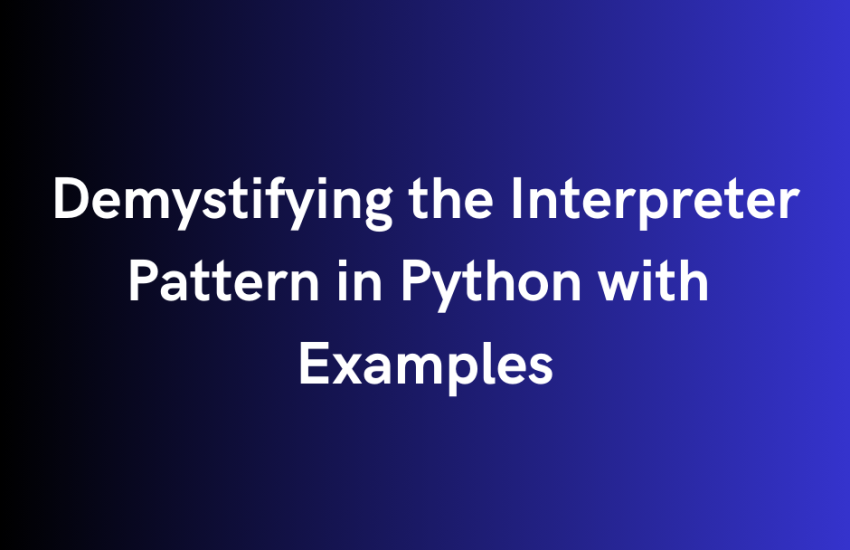The Interpreter Pattern is a behavioral design pattern that allows you to define a language’s grammar and interpret sentences in that language. In Python, this pattern can be implemented to build custom domain-specific languages (DSLs) or to parse and evaluate expressions. In this technical post, we’ll explore the Interpreter Pattern in Python, explain its key components, and provide examples to illustrate its usage.
Understanding the Interpreter Pattern:
The Interpreter Pattern consists of three main components:
- Context: This represents the global information used during interpretation. It contains data that the interpreter needs to understand and process. In Python, the context can be represented as a class that stores relevant data.
- Abstract Expression: Abstract Expression is an abstract class or interface that defines an interpret() method. Concrete expressions extend this class and implement their specific interpretation logic.
- Terminal and Non-terminal Expressions: These are concrete classes that implement abstract expressions. Terminal expressions are the smallest units of the language, while non-terminal expressions combine multiple terminal and non-terminal expressions.
Example 1: Simple Expression Evaluation
Let’s start with a simple example of an expression evaluator. We’ll create a DSL for basic arithmetic operations (addition, subtraction, multiplication, and division).
# Context
class Context:
def __init__(self):
self.variables = {}
# Abstract Expression
class Expression:
def interpret(self, context):
pass
# Terminal Expressions
class Number(Expression):
def __init__(self, value):
self.value = value
def interpret(self, context):
return self.value
class Add(Expression):
def __init__(self, left, right):
self.left = left
self.right = right
def interpret(self, context):
return self.left.interpret(context) + self.right.interpret(context)
# Non-terminal Expression
class Subtract(Expression):
def __init__(self, left, right):
self.left = left
self.right = right
def interpret(self, context):
return self.left.interpret(context) - self.right.interpret(context)
# Usage
if __name__ == "__main__":
context = Context()
context.variables['x'] = Number(10)
context.variables['y'] = Number(5)
expression = Add(Number(3), Subtract(context.variables['x'], context.variables['y']))
result = expression.interpret(context)
print("Result:", result) # Output: Result: 8
In this example, we created a simple expression evaluator that can handle addition and subtraction. The context stores variable values, and expressions interpret themselves based on the context.
Example 2: Custom DSL
Let’s extend our example to create a custom DSL for simple conditional statements.
# Add this class for custom DSL
class IfElse(Expression):
def __init__(self, condition, if_expr, else_expr):
self.condition = condition
self.if_expr = if_expr
self.else_expr = else_expr
def interpret(self, context):
if self.condition.interpret(context):
return self.if_expr.interpret(context)
else:
return self.else_expr.interpret(context)
# Usage
if __name__ == "__main__":
context = Context()
context.variables['x'] = Number(10)
context.variables['y'] = Number(5)
condition = Subtract(context.variables['x'], context.variables['y'])
if_expr = Add(Number(3), context.variables['x'])
else_expr = Subtract(Number(20), context.variables['y'])
expression = IfElse(condition, if_expr, else_expr)
result = expression.interpret(context)
print("Result:", result) # Output: Result: 13
In this extended example, we created a custom DSL with If-Else statements using the Interpreter Pattern. The IfElse expression interprets based on the condition and executes the appropriate branch.
Conclusion:
The Interpreter Pattern in Python allows us to build custom DSLs or parse and evaluate expressions by defining grammar and interpreting sentences in that language. It involves Context, Abstract Expression, and Terminal/Non-terminal expressions. By implementing these components effectively, you can create powerful and flexible interpreters for various applications.




